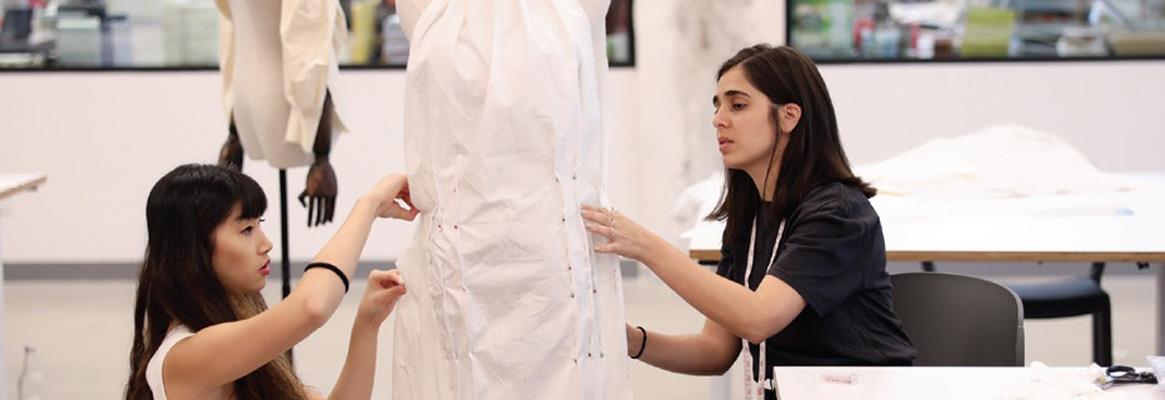Around 80 per cent of a product's environmental impact is locked in at the design stage. That is why the Redress Design Awards 2019, which recognised the stylish innovations of young designers from across the globe, is a significant step in the march towards circularity, Subir Ghosh writes.
If the fashion industry has to go truly circular, it will need to pick up the thread from where the long winding value chain of the industry currently trails off-in the humongous piles of post-consumer textile waste, an estimated 92 million tonnes generated annually at the last count. It would need a colossal effort on part of industry to turn that waste back into acceptable fashion. And, it would need to be done in a creative and stylish manner. Or else, how could that be fashion?

The world needs to be shown how to get started, and doing this is the Redress Design Award, billed as the world's largest sustainable fashion competition. On September 6, environmental charity Redress presented the 2019 finale where Maddie Williams from the UK won first prize and with this, the opportunity to create an upcycled retail collection for sustainable fashion brand REVERB, under the JNBY Group, one of Mainland China's largest fashion houses.
For her award-winning collection, 'The Mourners', Williams drew on the vast loss of biodiversity, planetary health and our humanity. Maddie applied upcycling and reconstruction techniques to reclaimed textiles, yarns and second-hand clothing, weaving them into zero-waste pieces that she constructed into her garments. Her oeuvre comes with a medieval theory of reflection on mortality: Memento mori symbolism. Williams currently works as a junior designer at Pentland Brands.
This ninth competition cycle, with Create Hong Kong of the Government of the Hong Kong Special Administrative Region as the lead sponsor, attracted hundreds of applications from designers in 43 countries and built upon Redress' 120 global fashion university partnerships, and 186 alumni designers from 27 countries, of which 50 have launched their sustainable brands.
The finalists-from Hong Kong, India, Australia, Canada, UK, Israel, Spain and Germany-created collections using sustainable and circular design techniques, upcycling widely-available waste materials, from unwanted workers' uniforms and saris to defective camping gear and bedsheets.
Design Interventions
There is a reason why Redress has been making this intervention with designers-it focuses on educating designers because 80 per cent of a product's environmental impact is laid down at the design stage. According to the 2017 report of the Ellen MacArthur Foundation titled A New Textiles Economy: Redesigning Fashion's Future, more than $500 billion of value is lost every year due to clothing under utilisation and the lack of recycling. Moreover, after use, less than 1 per cent of material used to produce clothing is recycled into new clothing.

Redress founder Christina Dean believes in making recycling / upcycling go mainstream and make a perceptible difference: "Curbing waste and carbon is critical. Waste is an urgent concern, especially in Asia, which is home to one of the fastest growing fashion consumer markets and where 50 per cent of the world's clothes are made. Redress is uniquely positioned to galvanise change and to inform the public about the dire need to make drastic changes in the fashion industry."
Ruth Farrell, global marketing director (textiles) at Eastman, remarked about this year's event: "The Redress Design Award contributes to the world of fashion by giving a platform for young designers to explore and learn about sustainable design. It is also very valuable in showcasing that creativity and innovative design can go hand in hand with sustainable design choices."
In 2018, after seven successful editions, the competition relaunched with a fresh look and name change: previously known as the EcoChic Design Award, the new Redress Design Award directly reflects the work of Redress itself and its overarching mission to reduce textile waste and ultimately fuel a circular system for fashion.
This is what the Redress website tells aspirants about the circular fashion system: "When designing a garment or sourcing fabrics, a clear understanding of the full lifecycle and end-of-life impacts of the garment will ultimately help you, as designers, to make the best decisions towards creating a more sustainable garment. With this knowledge, you will be able to weigh up options and make the most informed decision."

Redress contends that sustainable design strategies are approaches that can be applied to a garment's lifecycle in order to optimise the usage of materials and create innovative and low-impact solutions. Therefore, the Design Award zooms in on four circular design strategies: design for low-impact materials and process; design for longevity; design for recyclability; and design for low waste.
The 10th cycle of the competition opens in January 2020.
This article was first published in the November 2019 edition of the print magazine.








Comments